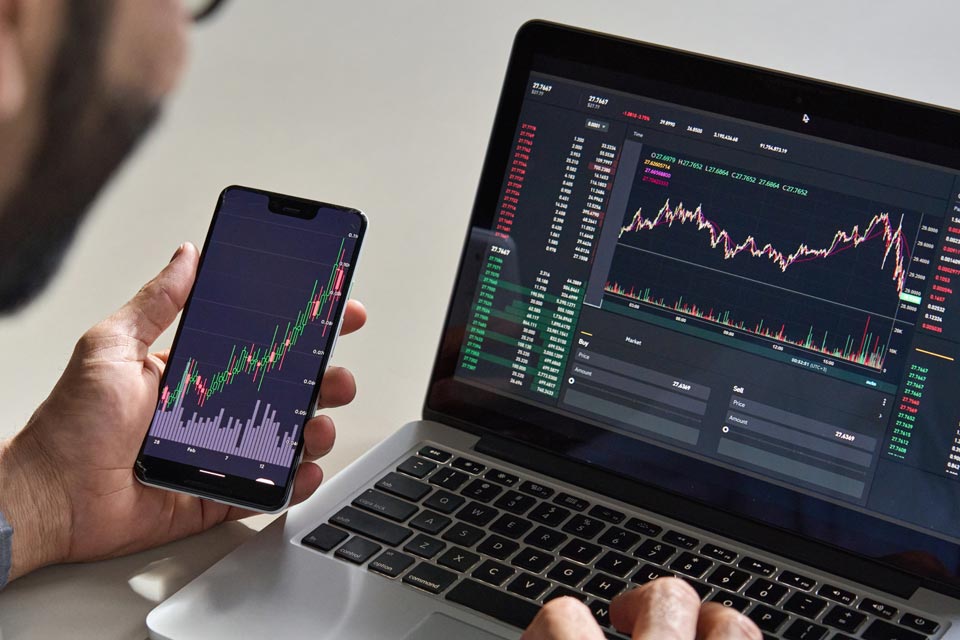Every forex trader has a different purpose, objective, time constraints, and investment capital. The right forex trading style for you depends on your main trading goals and requirements. If you believe you have great focus and you can easily make quick decisions even in stressful situations, scalping may be the right up your alley. But if you believe that you have substantial patience and precision, and you don't mind waiting a few days or weeks to profit off of your trade orders, swing trading might be the way forward for you. In this article, we take a look at the main differences between scalp trading vs swing trading.
What is scalping?
In scalping, you profit from the minuscule currency pair price changes by placing several hundreds and thousands of trade orders in a single trading day.
What is swing trading?
In swing trading, you place a trade order and hold it for a few days or weeks to profit from the short-to-medium term price gains in the forex market.
Scalping vs swing trading: Key differences
Time frame
The biggest difference between swing and scalp trading is the time frame, which is the amount of time in which the traders hold their trades. Scalpers use a short-term timeframe like a 5-minute or hourly chart to trade hundreds of orders in a single day. They only hold each trade for a few seconds to a few minutes before exiting all their positions, all on a single trading day. Swing traders, on the other hand, use a short to medium-term timeframe like a daily or weekly chart to trade a few trades over several days or weeks. They hold each trade for a few days or weeks and do not close their positions in a single trading day.
Risk
Risk refers to the chance of a trade failing due to the market moving against you. It can also be measured as the difference between expected returns and actual returns. Scalping in trading is much less risky since all trades are bought and sold in a span of a few minutes with limited price fluctuations. Unlike scalp trading, swing trading involves higher risk because swing traders hold trades overnight, exposing themselves to ‘overnight risks’ of potential high price fluctuations that can occur due to sudden economic, political or financial changes.
Trading costs
Trading costs refer to the costs that traders incur while trading in the forex market. These can include brokerage costs, taxes, exchange fees and more. Since scalping involves trading hundreds and thousands of orders in a single day, it also includes a high transaction cost. This happens because each trade consists of a brokerage cost that needs to be paid at the time of trade execution, and so, the higher the number of trades, the higher the brokerage cost incurred, making scalp trade an expensive process. On the other hand, swing traders incur fewer trading and transaction costs since they only trade a few orders over a span of several days and weeks, resulting in much lesser brokerage costs and taxes paid compared to scalpers.
Trading behaviour
Trading behaviour refers to the trader’s mindset and how they react to the trading environment. A scalper trader needs to make quick decisions in the market. But, a swing trader needs to be more patient to be able to wait for the markets to trend in their favour. Scalpers are required to trade under volatile market conditions and hence need to be able to function well under high-stress levels with discipline. On the other hand, swing traders need to rely more on technical analysis and therefore have lower stress levels.
Trade monitoring
Trade monitoring refers to how often the traders check the market and price fluctuations to exit or enter a new trade. Scalpers need to continuously monitor the market throughout the trading day to identify exit and entry points since they only hold trades for a few seconds or minutes. On the other hand, swing traders only need to monitor the markets every once in a while as they place fewer orders and hold their positions for an extended period of time. Swing traders look for price fluctuations in a market only a few times in a single trading day, unlike scalpers who check the markets for price fluctuations several times in a single hour.
Trade quantity
Trade quantity or volume of trade is the total units of currency pairs traded by a trader in a particular trading session. Since scalpers aim to profit off the minuscule price fluctuations, they trade huge quantities to earn small profits from individual trades executed quickly. The small profits add up to become significant profits due to the large quantum of trades. But, swing traders only engage in a few trades to make profits from price swings. Hence, the trade volume is lower for swing traders as they expect to make significant profits from medium to large price fluctuations over a period of a few days or weeks.
Scalping or swing trading: Which is your ideal style?
If you are a trader who wishes to take a minimum risk, scalping trading is a more suitable option for you. But, swing trading is best suited for traders who are patient enough to hold trades for a few weeks. Blueberry is a global trading platform that offers a seamless trading experience with tight spreads and lightning fast executions. Sign up for a live trading account or try a demo account.




